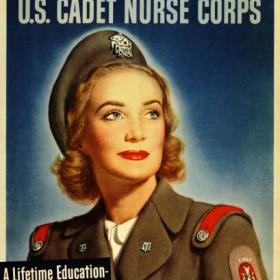WAVES
Women served in the U.S. Navy throughout World War I. The Naval Reserve Act of 1916 did not specifically address gender, thereby allowing the Navy to accept volunteer women beginning in March 1917.
Known as the “Yeoman (F)” or “Yeomanettes.”. In 1919 the women of the Navy were discharged, leaving the Navy Nurses as the only remaining female members of the Navy. In 1925, the Naval Reserve Act was revised to include specific language stating members of the Navy must be male. It took an act of Congress in July 1942 to create the Navy’s women’s unit, Women Accepted for Volunteer Emergency Service (WAVES).
WAVES were not allowed to serve on combat ships, on aircraft, or overseas. But their contributions allowed numerous men to leave military bases on U.S. soil in favor of combat service. WAVES performed jobs more widely ranging than during World War I, even training sailors on shoot anti-aircraft weapons. In 1944, Congress authorized the WAVES to serve in U.S. possessions.
Initially, there were also restrictions on who could join the WAVES. It was not until November 1944 that the first African American women became WAVES, at a rate of one African American woman for every 36 white women enlisted.
The WAVES served until the end of World War II in 1945, when most of them were discharged. In 1948 the Women’s Armed Services Integration Act made women a permanent part of the Navy.







